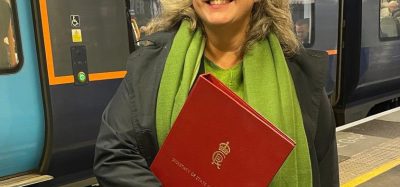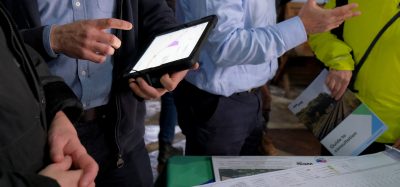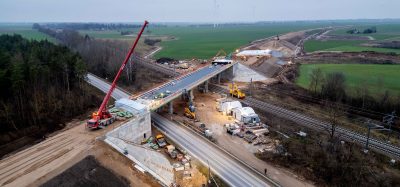Six grants awarded under EU-Rail’s first Call for Proposals 2022-1
Posted: 9 September 2022 | Elliot Robinson (Editorial Assistant - Global Railway Review) | No comments yet
Six projects, worth €568.4 million, will be funded under the Europe’s Rail Joint Undertaking 2022-1 first Call for Proposals for rail research & innovation activities.
It has been announced that six large flagship projects worth €568.4 million will be funded under the Europe’s Rail Joint Undertaking 2022-1 very first Call for Proposals for rail research & innovation activities. Europe’s Rail co-funding will amount up to €232.8 million. These multi-annual flagship projects will kick-off the R&I activities of the JU and build upon the results of the Shift2Rail Joint Undertaking, paving the way to the deployment of innovative operational and technological solutions in the European network.
The six flagship projects will work in the areas of European rail network management, automation and digitalisation of rail operations, sustainable and resilient systems, rail freight in the supply chain perspective and regional and capillary lines.
The Call for Proposals 2022-1 was open to all eligible entities in accordance with Horizon Europe rules of participation, to ensure broader representation of the European rail value chain, from the research and scientific community to major integrators and railway undertakings, and beyond. More than 200 entities from 14 countries will develop new solutions towards one European railway under the 2022-1 Call for Proposals.
“This summer we saw an increase of rail passengers in many parts of Europe,” Henrik Hololei, Director-General for Mobility and Transport at the European Commission, said. “Unfortunately, we also saw crowded trains and congested stations, raising questions as to whether our rail system is able to cope with the increased demand. If rail operators want to further expand their services, will Europe have sufficient passenger trains and sufficient capacity? Will we be able to operate enough freight wagons to make rail an affordable alternative to other transport modes, and also to transport Ukrainian grain? Will track capacity be available to run more trains?
Related news you will enjoy:
“The response to this is a modern ERTMS which increases rail capacity, developing common rules for efficient operations, allowing sufficiently elastic path allocations and unrestricted access to all rail tickets that are integrated with other modes as well as flexible rolling stock that can be operated wherever there is need for more capacity,” Hololei continued. “And last but not least, this makes possible tracks that allow road-like train running. We do not need national legacy system burdens or inbuilt infrastructure obstacles. Having all that in mind we trust the European rail industry to put itself in a key position so as to make these changes happen! I am pleased to see that the very first call from Europe’s Rail has attracted good quality projects that will modernise rail and deliver a genuine Single European Rail Area.”
“The success of the rail system convergence towards a “one”, seamless, resilient, interoperable, sustainable and efficient network will depend on the capacity of the sector to work together, re-invent itself, and leverage its strengths with a user-centric approach in mind,” Carlo Borghini, Executive Director at Europe’s Rail Joint Undertaking, said. “The large flagship projects funded under this very first Europe’s Rail Call for Proposals do exactly this, they bring together the European rail sector and allow it to transform itself through an integrated system approach that will benefit the European passengers and supply chain, and answer to EU policy objectives. Together with Members, partners, and my team, I am looking forward to working together to deliver, with the selected projects, during the next four years.”
Related topics
Related organisations
European Commission (EC), Europe’s Rail Joint Undertaking (EU-Rail)






